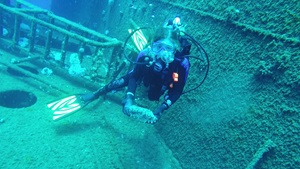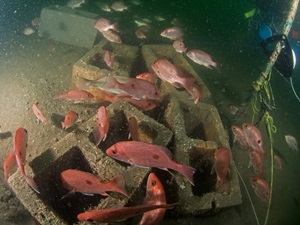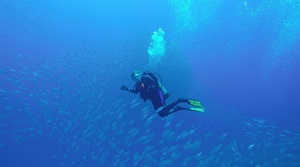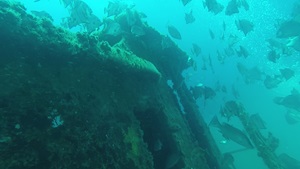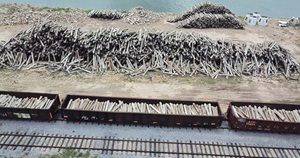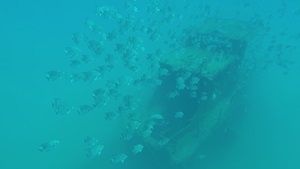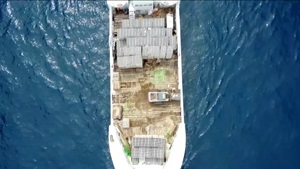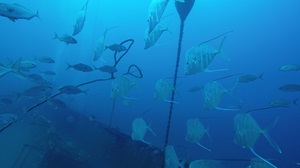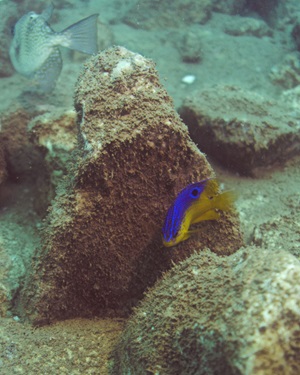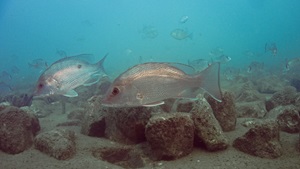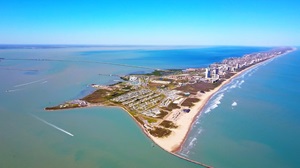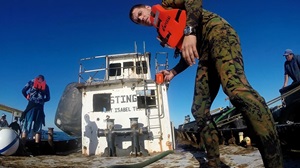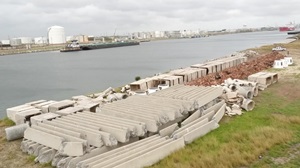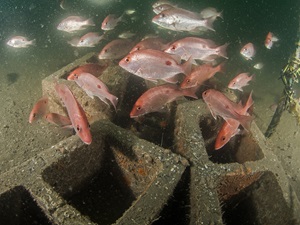A flourishing marine ecosystem in an underwater ‘sand desert’
Friends of RGV Reef building the largest artificial fish habitat off Texas Gulf Coast
The conditions, says Gary Glick, make the harvest.
Glick learned it growing up on a farm in deep South Texas—and he now understands it better than most, as one of the most impassioned marine habitat champions you’ll find anywhere in the Lone Star State.
Last year, Glick and his brother Bobby, representing their non-profit organization Friends of RGV Reef, began building a self-sustaining artificial reef for red snapper and game fish in the Gulf of Mexico, about eight nautical miles off South Padre Island.
An estimated 250,000 fish took up immediate residence after one season’s worth of reef construction in 2017, using 4,000 tons of highway dividers, box culverts and other concrete materials; 67,000 cinder blocks; 47 reefing pyramids; and a pair of cleaned steel-hull vessels.
This year, they aim to create another 800 acres of habitat using up to 8,000 pounds of concrete railroad ties, riprap and other materials.
At 1,650 acres, it’ll be the largest artificial reef off the Texas coast.
“This is netless aquaculture, really. The Gulf of Mexico has been good to my brother and I, and the idea that we could do something for the Gulf—to make a real difference in the reef fish population locally, if not across the Gulf—was definitely appealing,” says Glick.
“We know through economic impact studies that RGV Reef will boost the region’s total economic activity by more than $6 million a year—recreational activities and such. Personally, I’m in this because I want to increase the chances for that 12-year-old kid to bend the pole.”
Image gallery: Friends of RGV Reef
The bottom of the Gulf of Mexico, particularly west of the Mississippi delta, is almost exclusively featureless and flat—a “giant sand desert,” says Glick—which makes the “nursery reef” aspect of the RGV Reef its most unique and intriguing.
Low- and medium-relief aspects like cinder blocks, and concrete railroad ties arranged like pickup sticks, create myriad nooks and crannies that protect juvenile fish as they grow into adulthood, and also foster a flourishing ecosystem with a constant food supply.
The Texas A&M Corpus Christi Harte Research Institute for Gulf of Mexico Studies is teaming up with Friends of RGV Reef on this project, with marine biologists offering guidance to optimize this habitat.
“What’s special about this project is that it’s a near-shore reef. It’s easily accessible by just about everyone with a relatively small boat,” says Greg Stunz, director of sportfish science and conservation at the Harte Research Institute. “And in that region, the shelf depth and the deep blue waters help create the conditions for an exceptionally good artificial reef.”
In recent weeks, Enbridge’s Valley Crossing Pipeline project made a donation of $350,000 to the Friends of RGV Reef and Harte Research Institute. Among other things, this gift will pay for critical transportation of reefing material—dramatically reducing costs, and shortening the project timeline by years.
Glick already has plans to take the RGV Reef to another level—by building two concrete structures to within 30 feet of the water’s surface to attract open-sea species such as kingfish, sailfish and tarpon.
“We’re taking care to build the stepping stones of reef fish habitat,” he says, “but this would be the crowning glory of the reef.”




